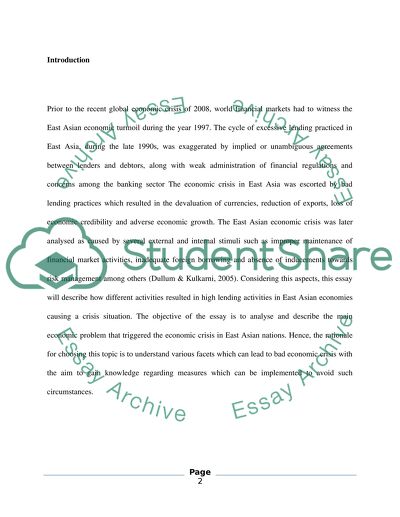Cite this document
(“Bad Lending Leading to the East Asian Crisis In 1990s Essay”, n.d.)
Bad Lending Leading to the East Asian Crisis In 1990s Essay. Retrieved from https://studentshare.org/finance-accounting/1465738-bad-lending-leading-to-the-east-asian-crisis-in-1990s
Bad Lending Leading to the East Asian Crisis In 1990s Essay. Retrieved from https://studentshare.org/finance-accounting/1465738-bad-lending-leading-to-the-east-asian-crisis-in-1990s
(Bad Lending Leading to the East Asian Crisis In 1990s Essay)
Bad Lending Leading to the East Asian Crisis In 1990s Essay. https://studentshare.org/finance-accounting/1465738-bad-lending-leading-to-the-east-asian-crisis-in-1990s.
Bad Lending Leading to the East Asian Crisis In 1990s Essay. https://studentshare.org/finance-accounting/1465738-bad-lending-leading-to-the-east-asian-crisis-in-1990s.
“Bad Lending Leading to the East Asian Crisis In 1990s Essay”, n.d. https://studentshare.org/finance-accounting/1465738-bad-lending-leading-to-the-east-asian-crisis-in-1990s.


